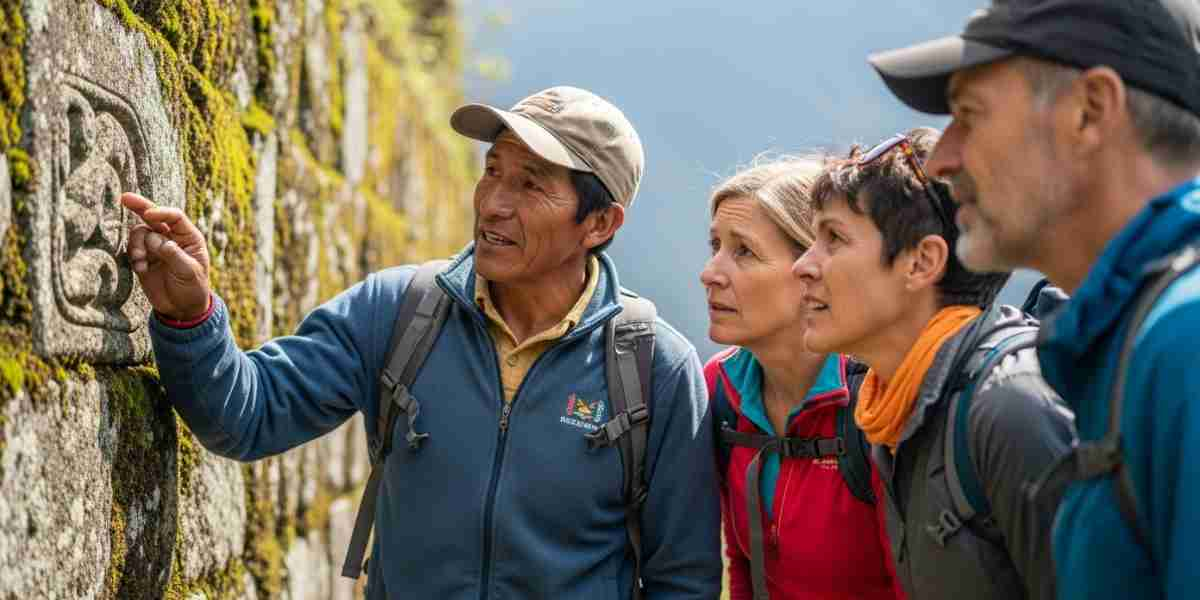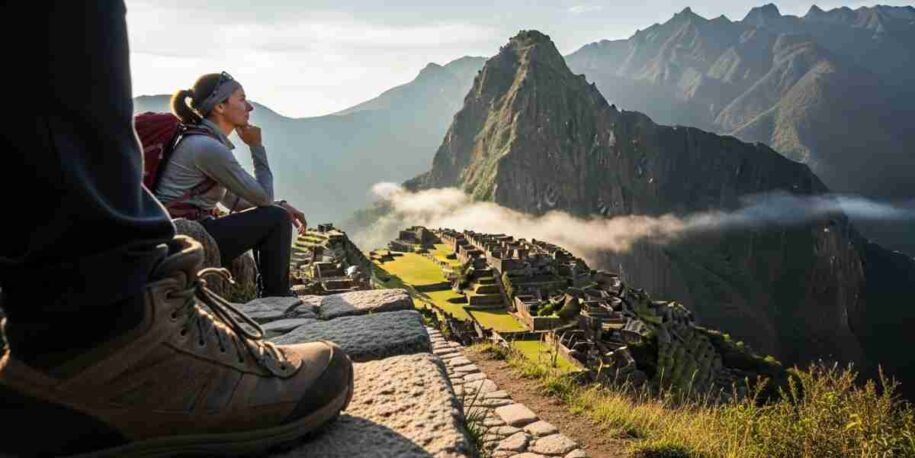Everyone has seen the photograph. That classic, breathtaking vista of Machu Picchu, with Huayna Picchu rising like a sentinel behind it. It’s an image that has launched a million travel dreams, a symbol of mystery and monumental achievement. And it is, without question, one of the most powerful sights you will ever witness. But I must be honest with you: if that image is all you’re coming for, you’re only reading the last page of a magnificent epic. You’re skipping to the end, missing the entire soul-stirring narrative that gives the ending its true power. The real story, the one that will change you, is etched into every stone of the path that leads you there. The authentic journey to Machu Picchu is the masterpiece; the citadel itself is the stunning epilogue.
✨ The Profound Difference Between Arriving and Earning the View
Imagine two ways to experience a great novel. One person reads a one-page summary—they know the plot points, the ending, the main characters. The other person spends days immersed in the story, feeling the protagonist’s struggles, celebrating their triumphs, and understanding the nuances that lead to the final conclusion. Which person truly understands the story? The answer is obvious. So it is with Machu Picchu. You can take a bus and a train, arriving in a few hours with thousands of others, all vying for that same photograph. It will be beautiful. But it will be a spectacle observed. When you choose to walk the ancient paths, like the legendary Classic Inca Trail, you are no longer an observer. You become part of the story.
The First Thousand Pages: Acclimatization and Anticipation in Cusco
The story doesn’t begin at Kilometer 82, the starting point of the trek. It begins in the winding, cobblestone streets of Cusco. This isn’t just a waiting room for your trek; it’s the essential prologue. Here, at 3,400 meters (11,152 feet), your body begins the crucial process of acclimatization, a physical dialogue with the Andes. But more than that, your mind begins to adjust. You hear the cadence of Quechua spoken alongside Spanish. You see the fusion of Inca foundations and colonial architecture. You begin to feel the weight and wisdom of a civilization that considered these mountains to be living deities, or Apus. This time is not about killing time; it’s about absorbing context. It’s about understanding the world that gave birth to the trail you’re about to walk. Rushing this part is like skipping the author’s foreword—you miss the intent behind the entire work.
«The traveler sees what he sees. The tourist sees what he has come to see.» – G.K. Chesterton
The Core Narrative: What the Inca Trail Experience Truly Teaches You
Once on the trail, you begin turning the real pages. This isn’t a simple walk; it’s a four-day, 43-kilometer (26-mile) immersion into a different reality. Each day is a chapter, each step a word, building a narrative that is uniquely yours.
Page by Page, Step by Step
The first pages are filled with physical exertion. The climb to Dead Woman’s Pass, or Warmiwañusqa, at 4,215 meters (13,828 feet) is a formidable challenge. Your lungs burn, your legs ache, and your mind questions your decisions. But this struggle is the plot. It strips away the non-essential. Out here, your job title, your worries, the noise of your daily life—it all fades. Your world shrinks to the rhythm of your own breathing, the placement of your feet, and the stunning, ever-changing tapestry of the Andes. You traverse cloud forests, alpine tundra, and lush valleys. You are writing the story with your own effort.
The Characters Who Give the Story Life
A story is empty without its characters. On the trail, your guides are the narrators, translating the silent language of the stones. They don’t just point out ruins; they share the meaning, the history, the spirit of the Quechua people from whom they descend. Your porters, moving with supernatural grace and strength, become figures of immense respect, embodying the resilience of the Andean spirit. And your fellow travelers, once strangers, become confidantes. The shared challenge forges a unique camaraderie, a bond built on mutual encouragement and awe. This human connection is a vital thread in the narrative.
The Whispers of History Along the Way
Unlike a direct trip to the epilogue, the trail is filled with foreshadowing. You don’t just see one Inca site; you explore many. The ruins of Llactapata, the stunning circular walls of Runkurakay, the elegant stonework of Sayacmarca—these are the subplots. They build the suspense and provide the historical context. You learn to recognize Inca water channels, terracing, and architectural styles. By the time you reach the end, you don’t just see a ruin; you see the culmination of a vast and brilliant system you’ve been walking through for days.
🛡️ The Peace of Mind to Immerse Yourself in the Story
You cannot lose yourself in a 4,000-page epic if you’re constantly worried about whether the pages will fall out. The anxiety of logistics—permits, equipment, food, altitude sickness—can ruin the entire experience. This is where the wisdom of choosing a dedicated, expert operator becomes paramount. A seamless, safe, and supportive trek is the invisible binding that holds the book together. It’s the knowledge that your camp is already set up, a nourishing meal awaits, and your guide is equipped with oxygen and first-aid expertise. This peace of mind isn’t a luxury; it’s the essential foundation that allows you to stop worrying and start experiencing. It allows you to focus on the story unfolding around you, secure in the knowledge that the details are handled with meticulous care. True trekking partners, as we discuss in our guide to safety on the trail, prioritize this above all else.

The Climax: Arriving at the Sun Gate (Inti Punku)
After days on the trail, on the final morning, you wake before dawn. You hike the last few kilometers in the dim, pre-dawn light. And then you arrive at the Sun Gate, Inti Punku. Below you, as the morning mist burns away, Machu Picchu reveals itself. This is not the photograph. This is not the postcard. This is your reward. This is a sight earned with sweat, perseverance, and respect. The emotion of this moment—a mix of exhaustion, elation, and profound awe—is indescribable. It’s a feeling that simply cannot be replicated by stepping off a bus. You didn’t just arrive at the climax; you lived through the entire plot that made it meaningful.
The Epilogue: Seeing the Meaning of Travel with New Eyes
Walking through the citadel after your trek is a completely different experience. You see the stonework with an educated eye. You recognize the spiritual significance of its alignment with the mountains you just traversed. It is no longer an isolated wonder, but the breathtaking final statement of a civilization whose genius you have intimately witnessed for days. You’ve read the book. You understand the context. Every corner holds more meaning, every vista resonates with personal memory. You’ve completed the authentic journey to Machu Picchu.
The world is full of destinations you can visit. But there are very few journeys that invite you to become part of their story. The Inca Trail is one of them. I urge you not to skip to the end. I urge you to read every single page. It’s a story that, I promise, will stay with you for the rest of your life.
Ready to Write Your Own Peruvian Story?
A transformative journey is built on a foundation of trust and expertise. If you feel the call to experience the full, unabridged story of the Andes, we are here to handle every detail, ensuring your adventure is as seamless as it is profound. Let’s start planning the narrative of a lifetime.
Begin your journey by speaking with one of our travel experts.

